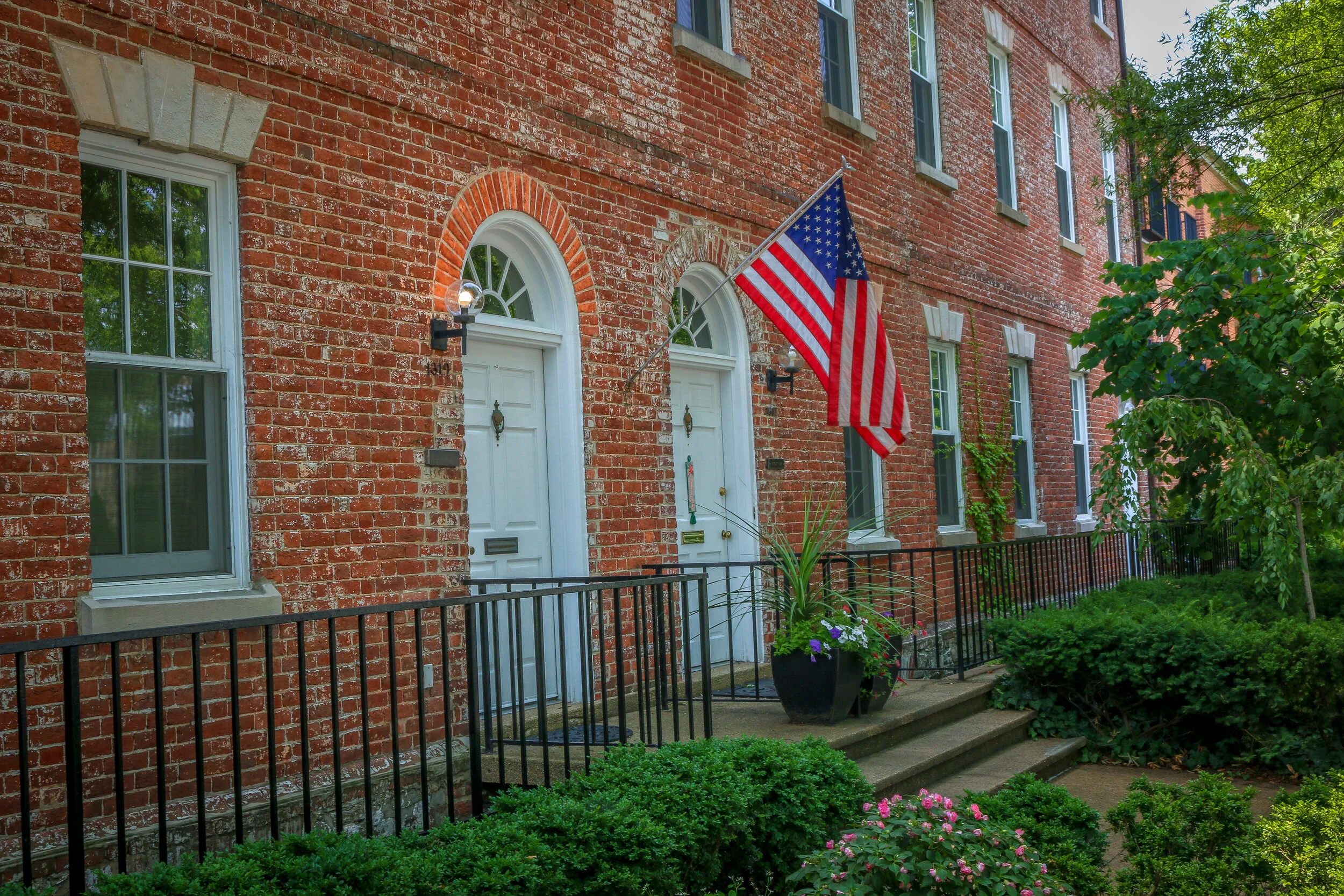Unlike most of the other properties I’ve featured in this series, Wheat Row hasn’t had any really famous residents. Nor has it hosted presidents or had any major historical events take place within its halls. If anything, it is reminiscent of how the regular people lived in the early days of Washington D.C. - just a common set of row houses set along an ordinary street.
The four connected townhouses which make up Wheat Row were built around 1794 and designed by architect William Lovering, whose architecture has featured prominently in this series so far. Even when they were built, the Georgian architectural style was considered out of date. People found the houses “small and poorly constructed of inferior materials”, and yet there they stand, 225 years later.
Wheat Row takes its name from one of its early residents, John Wheat, who lived in 1315 as early as 1819. Wheat was a local designer of gardens in the city and was listed in one census as a congressional messenger. He would later purchase 1319 and 1321 as well and his family lived along Wheat Row until a few years after the Civil War.
Wheat would have known Lieutenant Philip Stuart who lived in 1321, and may have purchased that property from him when Stuart left Wheat Row. Stuart had fought in the Revolution, and later served as the U.S. Representative from Maryland from 1811-1819. Stuart is buried in Congressional Cemetery.
In the 1930s, 1315 was owned by John Neligh, the Director of Industrial Crafts at the Barney Neighborhood House (then houses at the Duncanson Cranch House featured in an earlier post in this series - read that post HERE). When Neligh died in 1939, he left his property to the Barney House and they used it as a neighborhood art gallery called Rhoads House. That same year, 1317 was purchased by the National Craft Training Center which taught handicrafts to poor and working class girls. In 1941, a woman named Mary Adams bought 1319 and donated it to the Barney House for use as a daycare center. Barney House had also come into possession of 1317 at some point, giving them 1315, 1317 and 1319. 1321 was in use as an apartment house at the time, the original house having been subdivided at an earlier date.
In 1964, the Historical Society of Washington D.C. purchased Wheat Row in its entirety and it was incorporated into the new housing development called Harbor Square. These row houses once again became private residences and remain so today.
Wheat Row is located at 1315, 1317, 1319 and 1321 4th St. SW. The houses are not open to the public.
D.C.’s Oldest Homes was intended to be a single post with an overview of the history of some of the beautiful buildings from the city’s first decade and before. The more I looked at the history of each property, though, the further down the rabbit hole I went. I hope you enjoy this series of brief posts looking at each property individually. All color photos are available for sale and licensing.

